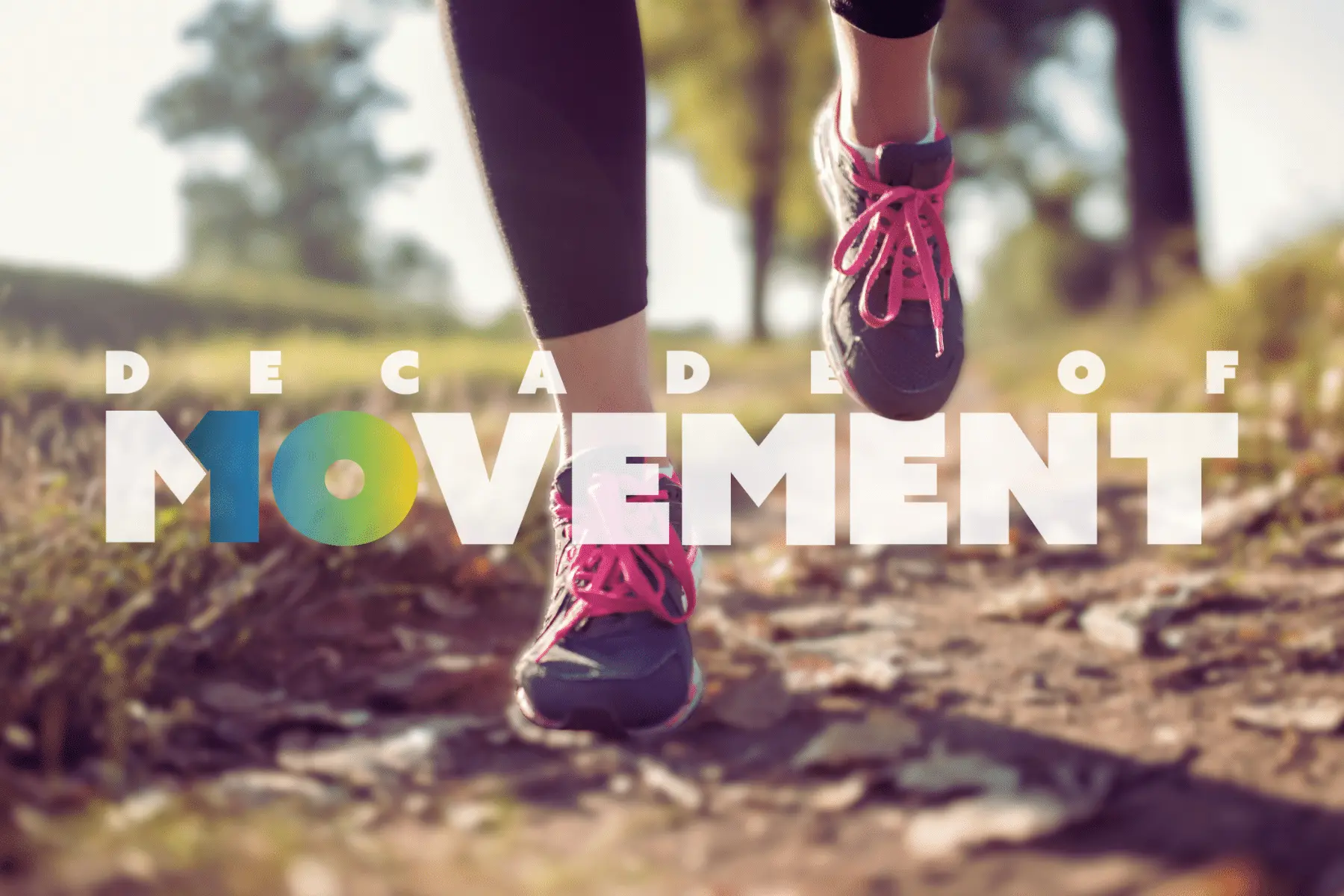Reduce Musculoskeletal Claims Volume Using Wearable Technology and Data Analysis
Accounting for nearly half a million injuries per year, MSDs represent one-third of all workers’ compensation costs, resulting in direct costs of more than $20 billion. This figure continues to increase, leading insurers and brokers to look beyond traditional injury prevention approaches.
Over the past three years, Bardavon has partnered with insurance carriers and brokers to help their customers reduce avoidable body-stressing MSD claims volumes in a cost-effective and sustainable way.
Background
Decades of research have indicated that the most effective injury prevention methods are found in elite sports. These methods involve the measurement of an athlete’s movements using wearable technology and analysis of the data collected to identify injury risk and guide action to reduce risk. This technology (validated by leading universities) is now available to companies through the Bardavon platform.
Overview
Each employer faced the following challenges in reducing the risk of musculoskeletal injuries:
- Workers were required to perform physical work tasks that contained high risks of musculoskeletal movement stress
- Poor worker engagement with previous injury prevention initiatives
- High cost of injury prevention programs with variable outcomes and difficulty demonstrating ROI
Objectives
Use wearable technology and data analysis to assess the physical demands on various workers, identify opportunities to reduce injury risks, take measurable steps to reduce injury risk, and then re-assess to validate the improvements. 
Method
Wearable technology sensors were used to measure the movements of selected work groups for three different employers over four months. Sensors were used to perform Task Assessment and then as a Movement Coach as outlined further below.
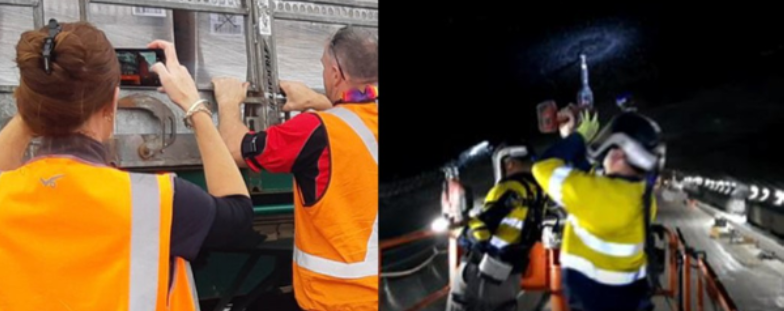
Task Assessments
A safety professional placed the sensors on a worker and recorded data and video through the smartphone app as the worker performed the work tasks. This enabled:
- The direct comparison between different methods of performing the task to identify the safest way
- An ability to select a benchmark assessment as the best technique to perform the task then build training materials focused on the benchmark
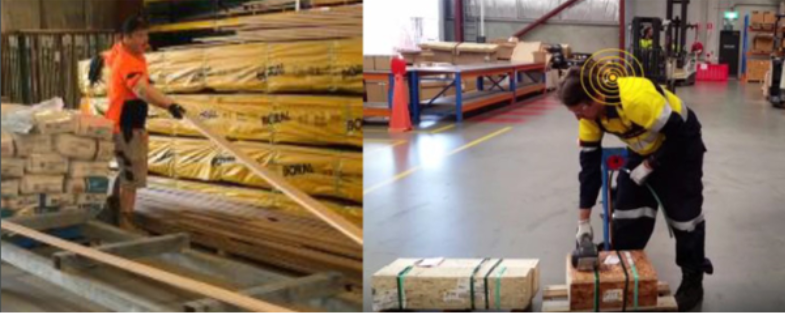
Movement Coach
The workers wore the sensors to measure their movements throughout a shift. The smartphone app provided real-time alerts when the worker moved in a way that increased their injury risk. This enabled:
- Workers to modify the way they perform tasks to reduce risk and protect themselves
- Employers to understand which workers were moving safely, which workers had a high injury risk, and which workers were fatiguing faster than others
Safety Team and Worker Engagement
To ensure high engagement with the wearable technology, the safety team onboarding process involved a 30-minute online training session, and the worker engagement process involved sports-themed posters around the worksite and a short instructional video.
Task Injury Risk Reduction
When data and video was collected from workers performing the task, it enabled an accurate assessment of the load on the body. This investigation highlighted any opportunity to reduce the injury risk through task modification or changes in operating procedures with the safety team.
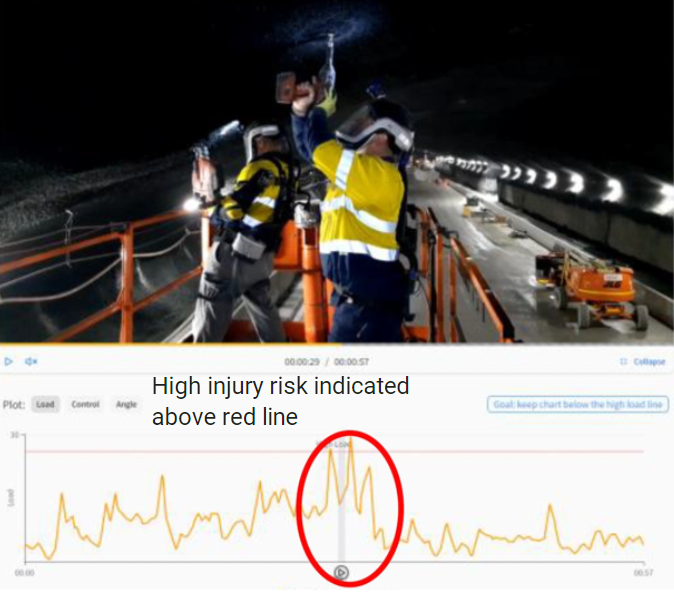
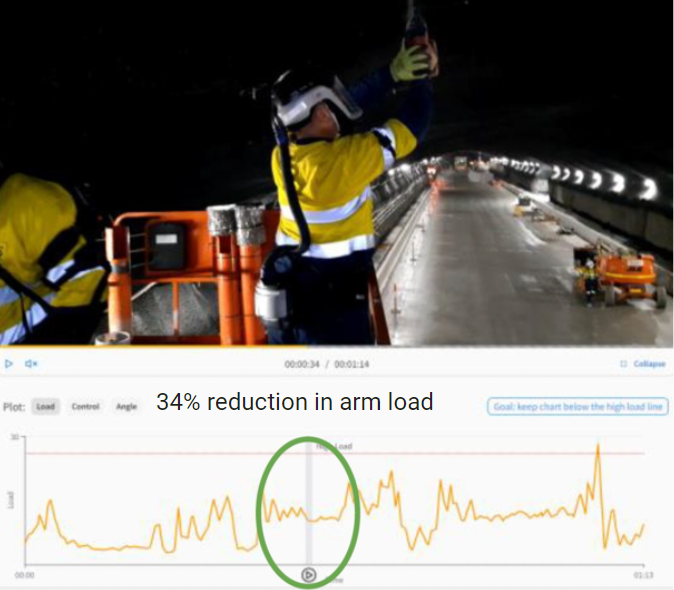
Employer 1 was an underground construction, drilling, and mining company. The above charts demonstrated the difference between the load on the arm when overhead drilling with two different types of drills. The first drill (red circle) increased the load on the arm by 34% compared to the second drill (circled in green). This resulted in a reduction of injuries recorded in this occupation from 21.47 per million hours to 0.
Worker Risk Reduction
Employer 2 was a metal recycling company. Each point on the adjacent scatter chart represents a Movement Coach report, consisting of data collected on movement stress throughout each worker’s shift. Each person in the chart completed the same job, highlighting the many approaches to the work used and the corresponding effect on the workers’ bodies.
The arm load score on the Y-axis represents the physical demands on the worker’s shoulder and arms, and the back load score on the X-axis represents the physical demands on the worker’s back.
The data in the chart enabled the high-risk workers to be identified (outlined in red). Additional injury prevention training was provided to these workers, which reduced their scores. Employer 2 observed a 45% reduction in ergonomic-related injuries during the assessment period as a result of this targeted training approach.
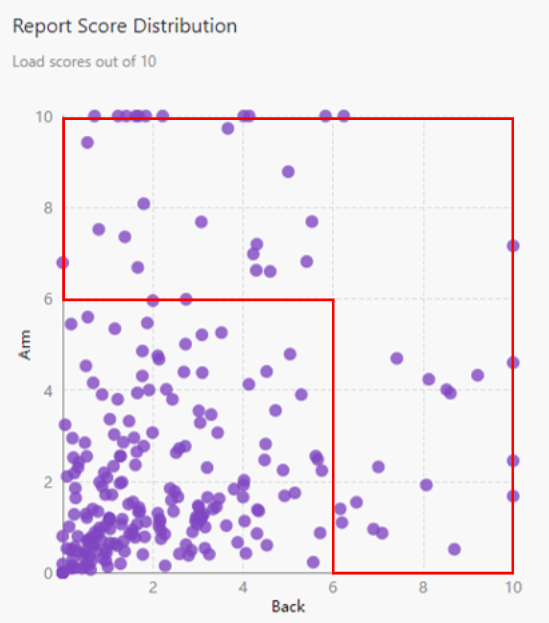
“Bardavon has allowed us to implement informed safety controls, which has led to a decrease in musculoskeletal injury rates and subsequent claims costs across multiple departments. This is evident through comparing our incident and claims records, both pre and post-Bardavon implementation.” –Brad G., Health and Safety Consultant
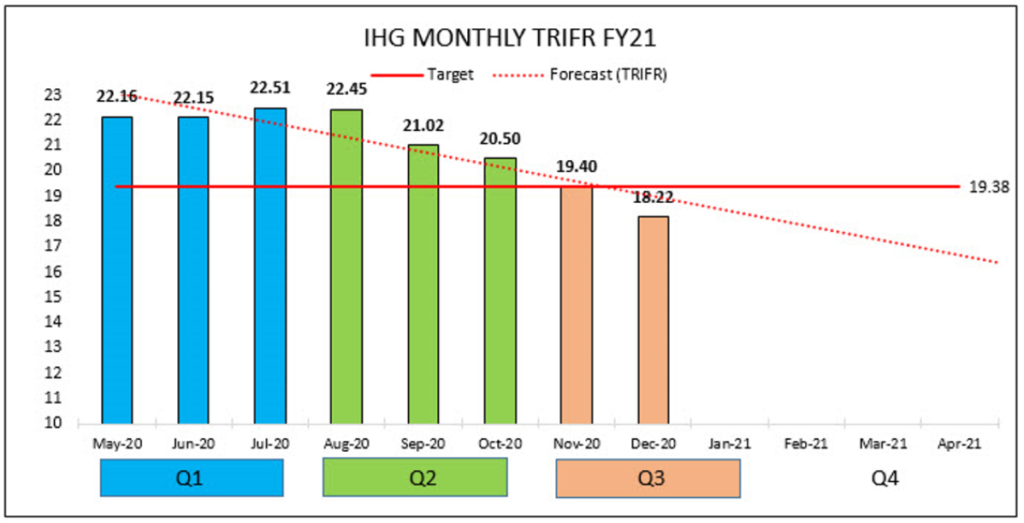
Employer 3 was a large hardware chain. The above chart shows their Total Recordable Injury Frequency Rate (TRIFR) for the workers involved. During the four-month program, the workers wore the sensors continuously, and the safety team conducted task assessments on the most physically demanding tasks. Modifications were made to several tasks, including the introduction of manual handling aids. As a result, employer 3 saw a 20% reduction in their TRIFR.
| Key Outcome | Opportunity |
|---|---|
| The load on the worker’s body is different when they perform tasks with different equipment and techniques. | Identify the equipment and techniques that reduce the load on the worker’s body and take action to train the workers to reduce their injury risks. |
| Some of the physical demands of the work tasks are unavoidable. | Educate and coach the workers on the health benefits of physical work when it’s performed in the safest way with low load. |
| Different tasks, locations, and individual workers may have different loads. | Develop a risk profile across tasks, locations, and individual workers and take action to reduce the load. Use AI to automatically provide workers with high load with individualized training content. |
Overall Trial Outcome
Bardavon’s injury prevention trial involved three different employers in three different industries: retail, mining and underground construction, and metal recycling. However, all employers shared the same problem: a high number of avoidable, body-stressing MSD workers’ compensation claims. The Bardavon program was comprehensive enough to identify and address the unique injury risks associated with the work tasks for each employer and take action to reduce these injury risks in a measurable way. This ultimately resulted in reduced MSD claims numbers for the insurance carrier.

Who Will Benefit Most from Bardavon’s Injury Prevention Solution?
All technologies are optimized for certain worker populations. Bardavon’s prevention technology is best suited for employers who are facing the following problems:
- Unavoidable Physical Work Tasks – Workers are required to perform physical tasks throughout their shift.
- Large Workforce (>500) Across Multiple Locations – The technology enables large groups of workers to be assessed and monitored for injury risks anywhere throughout the USA and globally.
- High number of MSD Claims – This is usually an indication that the physical work tasks are overloading workers, which is an opportunity to use a data-driven approach to modify tasks and/or workload distribution throughout a shift to minimize fatigue and reduce load on workers.
- High Rate of Worker Turnover – Using the technology as a key component for new worker onboarding can reduce the injury risks for new workers, reducing the turnover rates.
- Physically Demanding Industries – Warehousing, logistics, healthcare, municipalities, manufacturing, construction, hospitality and food, accommodation services, transportation, trucking, aerospace, and more.
Want to learn more about our Injury Prevention Suite?
Contact [email protected]
